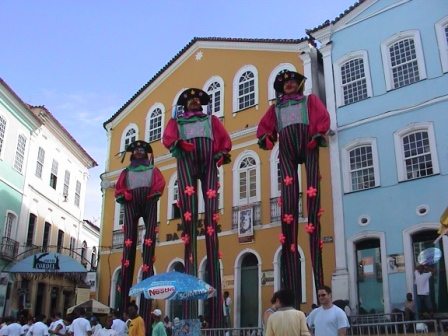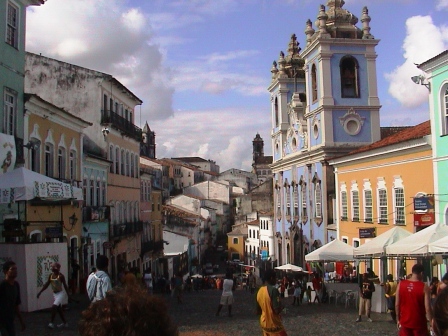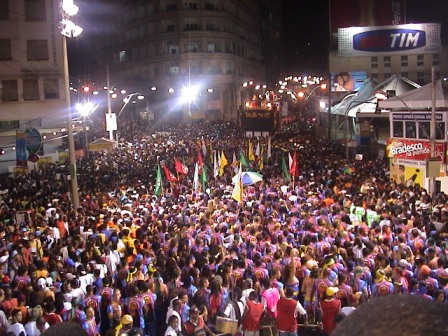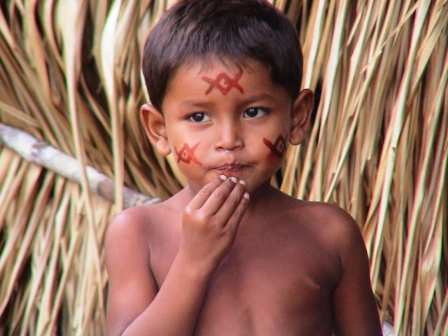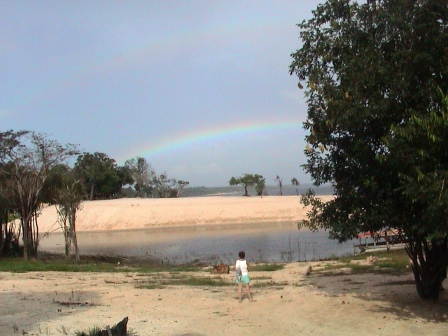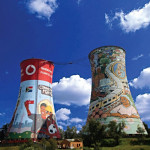Andy Mossack gives his definitive tourist guide to the 4 best places in Brazil
Mention Brazil to the bloke down the pub, in the creative department of Saatchi, or anywhere you care to mention and you’ll almost always get the same answer – ‘Great looking women, fantastic footie and the music’s not bad either’. And they wouldn’t be wrong. They wouldn’t be right either, because Brazil is everything you imagine and nothing you expect. It is a contradiction of modern capitalism and third world poverty. And it is a land of outrageous beauty and stupefying potential. But at its heart, lies a pulsating energy that simply refuses to go away.
Brazil is a country that defies logic. On one hand there is staggering wealth – just amble along the beaches at Ipanema and Copacabana in Rio and check out the properties and the passing trade. Sited right next to this awesome display of money is the biggest display of none of it – Rio’s favela – where over 160,000 people live in conditions that just might surprise you.
Sao Paulo
A vast metropolis of industry, corporates and technology; where there are more restaurants than taxis, and seemingly more cars per square foot than anywhere on earth. In fact Sao Paulo itself could have been an historic treasure trove. During the massive coffee boom of the late 1800’s, the coffee barons built magnificent mansions all along Avenida Paulista, the English built a station that was almost a replica of London’s Paddington, and there were Victorian parks planned. Sadly, when the boom bust, and land was needed to house all the many immigrants that had arrived to work, most of it was torn down and high rise accommodation built instead.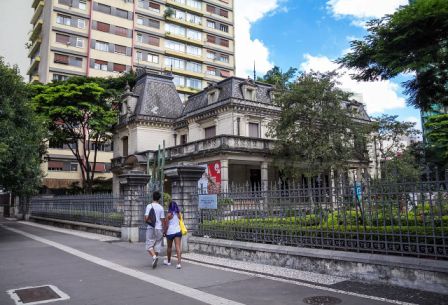
Glimpses of it are still there, (in fact there is a McDonalds housed in a beautiful former mansion that is a sight to behold), particularly around the Jardins area of the city which retains a real bohemian, arty atmosphere. It’s a city of bustling, booming pockets of developments, and the latest development is Morumbi, a business park with the likes of Microsoft and IBM and a host of global names.
Salvador
A part of Africa deposited in South America courtesy of slave immigration, to work the sugar cane rubber and coffee plantations. A place where reggae is revered, the food is most definitely Afro-Caribbean and the home of capoeira dancing – a combination of martial arts fighting and ballet. Whilst we’re in Salvador,
it’s probably appropriate to mention Carnival. Again, the perception is that Carnival is Rio; a fantastic parade of beautifully adorned people wearing stunning costumes and having a ball. And, again, that is true – for Rio. And just Rio. For Carnival or carnaval as Brazilians spell it, is a national event taking place every year the week before Ash Wednesday. Yes folks, it’s a religious festival to celebrate Lent!
Carnival is celebrated all over Brazil in different ways depending on the region. Rio is a costume parade, a visual event that is presented to a seated audience, whilst Salvador is an entirely different drum. Salvador is a true street event, where massed blocks of dancing revellers follow behind enormous trucks on top of which are live bands belting out various mixes of samba, reggae and rock. The sound systems are loud enough to be heard in Manchester, and this heady mix of bands, booze and dance are enough to send the assembled throng into a state of almost untold abandonment.
It is a pretty awesome sight to see tens of thousands of people in the streets (and we’re talking about morning to night, well morning again really) in what looks like total chaos but is actually incredibly well organised. Let’s face it, they’ve had a few years to practice getting it right. Whether you take part, or just watch this spectacle, there is a mountain of information you can get that gives you times and locations of parades and where there are support facilities and anything else you might need.
Salvador is said to present Carnival in the traditional way it was meant to be, but there are enough choices of style all over the country to find one that is more your bag. The one thread that is consistent throughout the country is that each participating group in Carnival is competing against others in their city for the honour of winning that year. This will be decided by scoring for the best dancing, costumes, and themes, and the winners get to do it all again for a night a week later!!
Carnaval week is more or less a national holiday in Brazil, and you should remember that if you go during this time. Hotels are more expensive, and daily life can come to a standstill. But, hey, so what, let’s party.
I stayed just outside the city centre at the charming Pousada Encanto de Itapoan in the beach resort of Itapoa . It was a deliberate strategy to get us out of the mayhem for some peace and quiet, recharge, and then venture back in again. It was run by a lovely couple who built it from scratch, it’s spotless and only a few feet from a glorious beach which, incidentally, was the birth place of Bosa nova.
Manaus
To the north of the country is the stunning Amazon forest, thousands of miles of tropical vegetation and exotic creatures great and small, and where the Indians, the only original inhabitants of Brazil, still live. They carve out a seemingly happy existence here, doing their thing. They fish, build homes, make stuff that Indians make, and are, at least on the face of it, pretty content with their lot. I mean, there’s not of a lot to take really, no roads, no big dirty urban conurbations to poison their lifestyles, just miles and miles of flooded forest.
Here and there are dotted about ruined structures – many made from quality French or English materials, the remains of another era, a time of the rubber boom when Brazil was the very centre of the World’s demand for quality latex. A time when thousands ventured here to make their fortune exporting latex from Amazonian forests, until the seeds were smuggled out to Asia and well, that was that.
But the buildings must have been impressive once. The only really well preserved example is the splendid Opera House in Manaus – the busy port city on the Amazon that was the one piece of real civilisation in this region. It was the gateway for ships to sail out to Europe taking their precious cargo, and of course it was the place where sailors and various dubious characters began their mischief. The best way to catch a glimpse of real rain forest is to stay in a lodge some ways up river for a few nights and get a taste of jungle.
I stayed at the Othon Jungle Palace, a floating hotel some 45 minutes by boat from Manaus on the River Negra. Had a wonderful guide thrown in; a guy called Eduardo, who with the assistance of his action man, machete-wielding assistant Tapinia, could have saved us from succumbing to all manner of grisly demises but in reality ensured that we had an intensely memorable stay.
In fact, the most dangerous part of the trip was navigating into one of the four veranda hammocks that were a welcome sight after returning from our daily trips. And what trips! We took a 2-hour walk in the jungle and learned how to live off the natural resources of the forest. Tree bark as an anaesthetic, tree sap for indigestion, dry fly mould for burning and keeping away insects, and palm leaves for waterproofing my roof.
Needless to say now if I ever get abandoned alone in a tropical jungle I can survive easily, then again, I could just employ Tapinia to come with me. We went piranha fishing, we took a nocturnal canoe ride to hunt for alligators and found one (ok,
it was a baby one, but one nonetheless), we visited an Indian village, and finally visited the place where the black waters of the Negra met the brown waters of the Amazon in an almost perfect unbroken line – amazing! In between all this, we came back to our floating palace and indulged in full board and lodgings that comprised air conditioned rooms with TV’s, a buffet style restaurant and even a large swimming pool. It must be pointed out that the hotel is eco friendly, uses generators for electricity, and is completely sympathetic to the preserving the Amazon in all it’s natural beauty.
Rio de Janeiro
A city set in an almost unbelievable natural setting. Huge mountains caress the beaches, and offer a startling backdrop to a city that pulsates with energy and maybe a hint of danger. Exploring Rio makes you realise how much has changed in Brazil. Everywhere you go are glimpses of a bygone age, the days when movie stars flew down to the Copacabana Palace and did their thing.
Today, Copacabana is a bit seedy. The Palace is still there of course in all its majesty, and the beach is an incredible expanse of yellow that attracts those famous footballers and these days many, many volleyball players.
But when night falls, it takes on a rather faded touristy veneer of hawkers and hookers.
Ipanema on the other hand, just along the way, is everything Copacabana used to be. It’s chic, safe, and full of beautiful people promenading as you would expect them to. The Everest Rio is a fine hotel situated only a block away from the beach, and within walking distance of some of Ipanema’s finest restaurants. Taking breakfast on the top floor overlooking the city is a memory I won’t forget in a hurry.
You can do it all here. Ride a cable car up Sugar Loaf Mountain and recreate that famous scene from Moonraker when Bond battled with Jaws, go visit the big guy who stands guard over the city night and day, and dance and eat your fill till you drop.
But a visit to Rio wouldn’t be complete without seeing the direct opposite of all this opulence, the enormous Favela that dominates the backdrop to the city. It is hard to imagine that thousands of people live in there, in a kind of self-governing principality that seems to have a life of its own. Far from the dreadful poverty that I thought I would witness,
I was surprised to find a living breathing community that is proud of its existence and wouldn’t swap it for anything else. They live in purpose-built brick dwellings with electricity, running water, and even cable TV. There are churches, synagogues, and temples, and even schools. The problem is that many of its inhabitants rather than taking real jobs in the city, prefer a life of petty crime and begging to pay their way.
It’s a change of mindset that is needed; and by joining the daily tours into it, run by people who live there, you can make your contribution to showing them just how earning an honest buck can pay dividends.
So, just take a breath, and reflect on my whirlwind tour of a fascinating country that is striving hard to match its potential. Brazil has so much going for it, but just needs a helping hand or two to get there. The 2014 World Cup should be the springboard for Brazil to prosper. Only time will tell.
All images (c) Andy Mossack
I love this guide to Brazil. Where can I find all the places you mention?
For the best rates available for the Jungle Palace visit here.
Everest Rio Hotel Rio de Janeiro
Pousada Encanto de Itapoan Salvador

